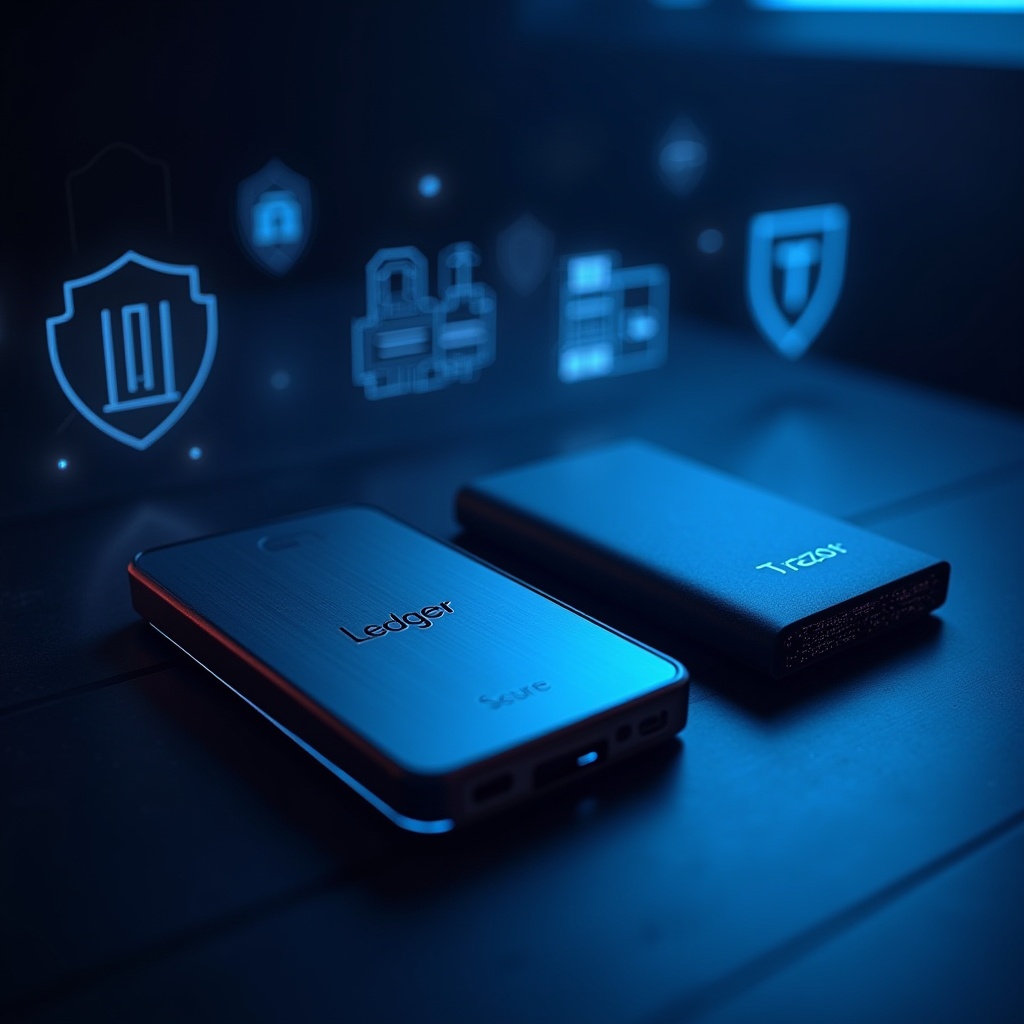GDPR Meets Immutable Ledgers
Let’s have a candid conversation about a complex issue that’s been stirring debates in the tech and legal communities: the intersection of the European Union’s General Data Protection Regulation (GDPR) and blockchain technology. This isn’t just a theoretical discussion; it’s a real-world challenge that affects how we handle personal data in an era increasingly dominated by decentralized systems.
The Clash of Titans: GDPR and Blockchain
On one side, we have the GDPR—a robust framework designed to protect personal data and uphold individual privacy rights. It mandates that personal data be processed lawfully, transparently, and for specific purposes. Crucially, it grants individuals the right to have their data erased, known as the “right to be forgotten.”
On the other side, there’s blockchain technology, celebrated for its decentralization, transparency, and, notably, immutability. Once data is recorded on a blockchain, it’s there permanently. This permanence is a double-edged sword: it ensures data integrity but poses significant challenges when it comes to modifying or deleting personal data to comply with GDPR requirements.
The Heart of the Conflict
The core of the issue lies in the fundamental differences between GDPR and blockchain principles. GDPR requires that personal data be erasable upon request, but blockchain’s design makes data deletion practically impossible. This raises critical questions:
– How can we reconcile the GDPR’s requirements with blockchain’s immutable nature?
– Is it possible to design blockchain systems that respect privacy rights without compromising their core functionalities?
Navigating the Regulatory Landscape
Recognizing these challenges, the European Data Protection Board (EDPB) released Guidelines 02/2025, aiming to provide clarity on processing personal data through blockchain technologies. These guidelines emphasize the importance of data protection by design and by default, urging organizations to consider privacy implications from the outset of any blockchain project.
The EDPB’s guidelines are a step toward bridging the gap between GDPR and blockchain, but they also underscore the complexity of achieving full compliance. They suggest that while blockchain can be used in ways that align with GDPR, it requires careful planning, technical innovation, and a willingness to adapt traditional blockchain architectures.
The Path Forward
As we delve deeper into this topic, we’ll explore the specific conflicts between GDPR and blockchain, examine the EDPB’s recommendations, and discuss potential technical and organizational solutions. The goal is to understand whether blockchain can ever be truly compliant with GDPR and, if so, how.
This journey is not just about legal compliance; it’s about finding a balance between innovation and responsibility. It’s about ensuring that as we embrace new technologies, we don’t lose sight of the fundamental rights and protections that should accompany them.
Overview of GDPR Requirements
To understand how blockchain technology intersects with the General Data Protection Regulation (GDPR), it’s essential to grasp the foundational principles and rights established by the GDPR. These elements form the bedrock of data protection and privacy in the European Union and have far-reaching implications for any technology handling personal data.
Fundamental Principles of GDPR
The GDPR outlines seven core principles that govern the processing of personal data:
Lawfulness, Fairness, and Transparency – Personal data must be processed lawfully, fairly, and in a transparent manner concerning the data subject.
Purpose Limitation – Data should be collected for specified, explicit, and legitimate purposes.
Data Minimization – Only data that is adequate, relevant, and necessary for the purposes should be collected.
Accuracy – Data must be accurate and kept up to date.
Storage Limitation – Data should not be kept longer than necessary.
Integrity and Confidentiality – Appropriate security must be in place to protect data.
Accountability – The controller is responsible for and must demonstrate compliance with these principles.
Data Subject Rights
Right to Access – Individuals have the right to know what data is being processed and why.
Right to Rectification – Individuals can request correction of inaccurate personal data.
Right to Erasure (Right to Be Forgotten) – Individuals can request deletion of data under certain conditions.
Right to Restriction of Processing – Individuals can limit how their data is used.
Right to Data Portability – Individuals can receive their data in a readable format and transfer it elsewhere.
Right to Object – Individuals can object to processing on specific grounds.
Rights Related to Automated Decision Making – Individuals can avoid decisions made without human intervention.
Blockchain Technology Fundamentals
Core Characteristics of Blockchain
Decentralization: Data is distributed across multiple nodes with no central authority.
Immutability: Once written, data cannot be changed or deleted.
Transparency: In public blockchains, all data is visible to all participants.
Pseudonymity: Identities are represented by cryptographic keys, not personal names.
Types of Blockchain Architectures
Public Blockchains: Fully decentralized and open; anyone can participate.
Private Blockchains: Access is restricted to specific users; better for regulated environments.
Consortium Blockchains: Controlled by a group of organizations; hybrid of public and private.
Hybrid Blockchains: Combine public transparency with private access control mechanisms.
Implications for GDPR Compliance
Blockchain’s core features create friction with GDPR, especially concerning the right to erasure and data minimization. Public blockchains are particularly difficult to reconcile with GDPR, whereas private and consortium models offer more leeway through governance and access restrictions.
GDPR Rights vs. Blockchain Immutability
The Immutable Nature of Blockchain
Blockchain’s immutability is one of its defining features. Once data is recorded on a blockchain, it becomes a permanent part of the ledger. This characteristic ensures data integrity and trustworthiness, as it prevents tampering and unauthorized alterations. However, this same feature poses significant challenges when it comes to complying with certain GDPR provisions, particularly those that grant individuals rights over their personal data.
GDPR Rights in Conflict with Immutability
Right to Erasure (“Right to be Forgotten”): Under Article 17 of the GDPR, individuals have the right to request deletion of their personal data. On a blockchain, deletion is technically infeasible.
Right to Rectification: Article 16 allows individuals to request corrections to their data. Blockchain’s immutability means that inaccurate data can only be “overwritten” with a new transaction, but the original error remains.
Data Minimization & Storage Limitation: GDPR mandates minimal and purpose-bound data collection and storage. Blockchain’s permanent storage of transactional data directly contradicts this.
Potential Solutions and Workarounds
Off-Chain Storage: Store personal data off-chain and only include non-personal references or hashes on-chain.
Encryption and Key Destruction: Encrypt data before adding it to the blockchain. Destroying encryption keys upon erasure requests makes the data unreadable.
Permissioned Blockchains: These allow greater control and governance over data access and processing.
Zero-Knowledge Proofs: Allow validation of information without revealing underlying personal data.
EDPB Guidelines 02/2025: Navigating Blockchain GDPR Compliance
Defining Roles and Responsibilities
The EDPB emphasizes the need to identify:
Data Controllers: Entities determining the purposes and means of processing.
Data Processors: Entities acting on behalf of controllers.
In decentralized environments, this becomes complex. The EDPB recommends forming consortia or legal governance bodies to formalize these roles.
Data Protection by Design and Default
Avoid On-Chain Personal Data: Use hashes or identifiers instead.
Limit Access: Use private or permissioned blockchains to restrict visibility.
Encrypt Sensitive Data: Where storage is necessary, encryption should be the default.
Data Protection Impact Assessments (DPIAs)
Evaluate whether blockchain is a necessary and proportional technology for processing personal data.
Identify and mitigate risks to data subjects.
Document compliance efforts to demonstrate accountability.
Technical and Organizational Measures
Off-Chain Storage: Place identifiable data in traditional databases.
Smart Contract Governance: Automate enforcement of user rights via code.
Regular Auditing: Update risk assessments and security protocols routinely.
International Transfers
Blockchain nodes may exist globally. Use legal safeguards like Standard Contractual Clauses (SCCs) or Binding Corporate Rules (BCRs) for compliance.
Achieving GDPR Compliance in Blockchain Systems: Practical Strategies
Data Minimization and Off-Chain Storage
Avoid Full Data on Chain: Store only cryptographic hashes or identifiers.
Off-Chain Storage: Maintain data in secure, conventional databases with links stored on-chain.
Privacy by Design and Default
Built-in Access Controls: Restrict who can view or interact with data.
Default to Privacy: Design blockchain applications with minimal exposure of personal data.
Conduct Data Protection Impact Assessments
Assess Proportionality: Blockchain may not be suitable for all personal data processing.
Plan for Risk: Identify and mitigate threats to user rights before deployment.
Define Clear Roles
Data Controllers vs Processors: Formalize responsibilities early.
Consortium Governance: Use legal frameworks to structure multi-party systems.
Manage International Data Transfers
Track Node Locations: Ensure compliance with GDPR’s rules on data transfers outside the EU.
Use Legal Mechanisms: Adopt SCCs or localize data where appropriate.
Use Emerging Cryptographic Techniques
Zero-Knowledge Proofs: Authenticate claims without exposing sensitive data.
Homomorphic Encryption: Enable data analysis without decrypting the data.
Continuous Monitoring and Audits
Security Reviews: Periodic technical audits.
Policy Updates: Evolve policies as regulations change or technology advances.
Case Studies: Real-World Applications of GDPR-Compliant Blockchain Solutions
BCdiploma – Secure Academic Credentialing
BCdiploma offers a blockchain-based platform for issuing and verifying academic credentials.
GDPR Alignment: Cryptographic hashes of diplomas are stored on-chain. No personal data is written directly to the blockchain.
Data Minimization: Personal data is held off-chain and accessed via secure, encrypted links.
Right to Erasure: Since data is stored off-chain, users can request deletion without affecting blockchain integrity.
LUCE – Monitoring Data License Compliance
LUCE uses blockchain to monitor and enforce data licensing.
GDPR Alignment: Usage of data and processing purposes are immutably logged.
Data Subject Rights: Individuals can request restriction or deletion from off-chain repositories.
Transparency: Audit trails show exactly how and when data has been used.
Soteria – User Rights Management
Soteria is a blockchain-based user rights management system with a dual-layer design.
GDPR Alignment: Personal data sharing agreements are modeled and enforced through smart contracts.
Access Control and Revocation: Users can dynamically manage permissions.
Audit Trails: Every access and modification is logged in a way that supports GDPR accountability.
Hyperledger Fabric – Rental Documentation in Portugal
A blockchain-based documentation system was implemented for managing real estate rentals.
Metadata On-Chain: Only non-identifiable data (hashes) are recorded on-chain.
Smart Contract Access Management: Role-based permissions determine who can access full documents.
Off-Chain Storage: Rental documents are encrypted and stored in a private repository.
Decentralized KYC in Financial Services
Several financial service providers use blockchain for Know Your Customer (KYC) procedures.
User-Controlled Data: Customers approve access to data selectively.
Minimized Sharing: Data is shared only when necessary and with explicit consent.
Compliance Efficiency: Reduces onboarding times while maintaining data sovereignty.
The Road Ahead: Future Outlook for Blockchain and GDPR Compliance
Self-Sovereign Identity (SSI)
One of the most promising developments is the rise of Self-Sovereign Identity (SSI) systems. These allow users to manage their own identities, control who accesses their data, and revoke access at will. Instead of central identity providers, users hold verifiable credentials stored off-chain and referenced on-chain via secure hashes. This aligns strongly with GDPR principles.
Privacy-Preserving Cryptography
Techniques such as Zero-Knowledge Proofs and Homomorphic Encryption enable data validation and computation without revealing underlying personal information. This allows services to confirm eligibility without accessing or storing personal details—ideal for meeting GDPR’s data minimization and confidentiality requirements.
Regulatory Technology (RegTech) Integration
Automated compliance tools are being embedded into blockchain networks. Smart contracts can dynamically enforce privacy rules or signal when a data protection action is required. These tools help organizations scale their compliance without sacrificing performance.
Cross-Border Legal Harmonization
As blockchain systems often span multiple countries, data sovereignty and transfer laws are increasingly important. EU regulators are encouraging consistent policies across Member States, while international working groups are exploring common standards for privacy-preserving blockchain systems.
Standardization and Industry Cooperation
Organizations like ISO and IEEE are working toward common frameworks for blockchain compliance. Sector-specific consortia in healthcare, banking, and logistics are producing playbooks for GDPR-aligned implementations.
Bridging the Divide Between Blockchain and GDPR
Navigating the Compliance Landscape
The European Data Protection Board’s Guidelines 02/2025 provide clear direction:
Avoid storing personal data directly on-chain.
Embrace privacy by design and default.
Clarify the roles of all participants.
Use off-chain storage and smart contracts to enforce user rights.
These principles don’t ask blockchain to change its nature. They ask blockchain architects to understand legal constraints and find smart ways to work within them.
Emerging Solutions and Innovation
Self-sovereign identity gives users full control.
Cryptography like Zero-Knowledge Proofs lets systems confirm truths without revealing data.
RegTech and legal harmonization help organizations scale compliant deployments.
Decentralized KYC and permissioned networks are proving this approach viable in finance, real estate, and education.
The Path Forward
The future is not about compromise; it’s about synergy. Compliance and innovation are not opposites—they’re partners in sustainable technological progress.
For developers, this means learning not just the syntax of Solidity or Go, but the language of ethics and accountability. For regulators, it means understanding enough about technology to write flexible, future-ready rules. And for users, it means knowing their rights and choosing services that respect them.
Blockchain can be compliant. Not by diluting its values, but by reimagining how those values serve people—not just technology.





